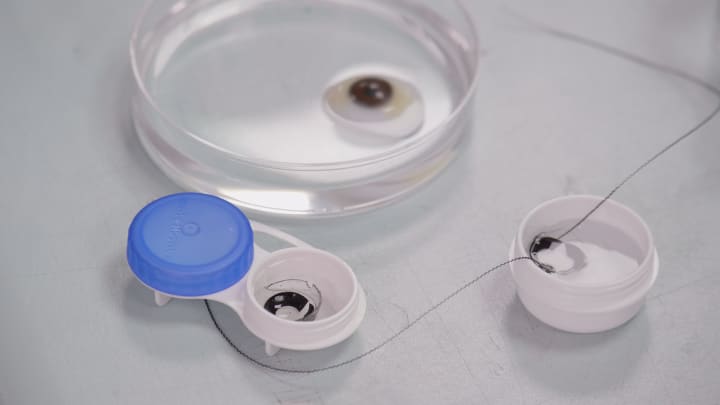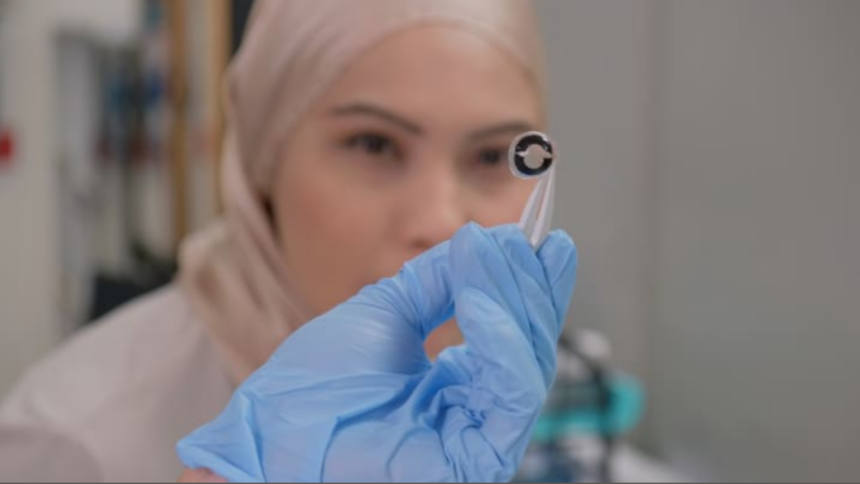Inspired by a “Mission Impossible” movie, scientist Lee Seok Woo from Nanyang Technological University’s School of Electrical and Electronic Engineering has invented a groundbreaking battery for smart contact lenses. In the film, an agent uses contact lenses with facial recognition and eye-tracking capabilities, a concept that Lee wants to turn into reality.
Innovative battery design
Lee’s expertise in battery components laid the foundation for his foray into wearable technology. He recognized that smart contact lenses would require safe and compact batteries, essential for their development. Given that contact lenses are extremely thin, at just 0.5 mm, the batteries needed to be equally slim and flexible to ensure user comfort. Lee and his team succeeded in creating a battery that is about 0.2 mm thick, roughly twice the thickness of a human hair.

Biocompatible and safe
The newly developed battery is powered using a biocompatible saline solution instead of traditional lithium-ion batteries, which contain flammable materials. This innovative battery can be charged through conventional wire methods or a chemical method involving glucose. When the battery is dipped into a saline solution, the glucose reacts with sodium and chloride ions to charge it. After eight hours of chemical charging, the battery can reach 80% of its full capacity, providing power for a few hours of daily use.
Tear-powered charging
An intriguing feature of this battery is its ability to be powered by tear solution. Tears contain glucose, meaning that while wearing the contact lenses, a user’s tears can help charge the battery. “If you cry more, then you can charge your battery more,” Lee noted humorously.
Currently, the capacity and voltage of the battery are still quite low, producing a voltage of approximately 0.3V – 0.6V. For comparison, a standard AA battery has a voltage of 1.5V. This output is not yet sufficient for powering data storage or internet connections. However, the team is actively working to enhance the battery’s specifications.
Potential healthcare applications
Lee sees significant potential for these smart contact lenses in health care, particularly for diabetic patients. The team is exploring how the contact lenses could detect glucose levels while being worn, providing a continuous and non-invasive method for monitoring blood sugar levels.

Cost considerations
Despite the promising applications, Lee emphasizes the importance of keeping costs low. He believes that once the battery reaches serious commercialization, it should cost only a few dollars, making it accessible and affordable for widespread use.
Lee Seok Woo’s innovative battery design for smart contact lenses represents a significant leap forward in wearable technology. With potential applications in health care and everyday use, these lenses could transform how we interact with technology and monitor our health. As the team continues to develop and refine the battery’s capabilities, the dream of smart contact lenses inspired by “Mission Impossible” inches closer to becoming a reality.






